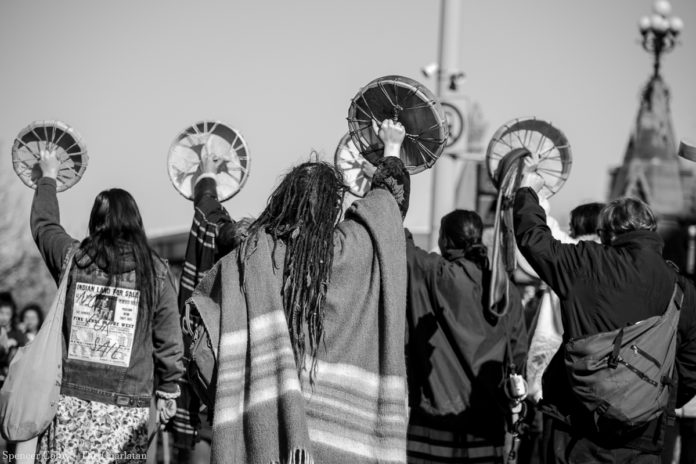
Canada Day is a time to gather around for barbecues, pool parties, and a couple of cold ones around the fire while wearing our red and white to celebrate our nation’s proud history. This is an opportunity to take a couple of days off from work and spend time with friends and family, and why wouldn’t you on this glorious historical week?
That’s probably how you would feel any other year, at least, but reflecting on Canada’s history shows us that this isn’t all there is to it.
As Canadians it’s fair to admit that sometimes we take our values and icons seriously — hockey, moose, geese, beavers, the Tragically Hip, Alanis Morrissette, Great Big Sea, Rush, the Georgian Bay, Rocky Mountains, free healthcare, fresh water and Molson Canadian just to name a few — sorry, eh?
Most will be scratching our heads this week wondering how we feel about this Canada Day in the wake of COVID-19 cancellations of the regular annual festivities, the Black Lives Matter movement, Missing and Murdered Indigenous Women, the Truth and Reconciliation Commission, and Indigenous leaders calling for action. Things may look a little different this year. We will beat this virus and we will get past it as a society, but the BLM movement is raising fundamental unanswered questions about what we stand for as Canadians and exactly what we are celebrating this Canada Day as we recognize the history of our country since confederation.
Canada has a very complex history full of hope, discovery, and culture but also death, tragedy, racism, and destruction. It’s important to ask the question this Canada Day: what are we celebrating? What did July 1, 1867 mean to the inhabitants of this land back then and what does it mean now?
In recent years, the mistreatment of and heinous crimes against Canada’s Indigenous and minority populations has been no secret. It has been and still is an ongoing process to spread awareness and to revise our history books to tell the true and accurate story of how Canada was formed and how it has influenced our people and culture.
Formerly known as Dominion Day, July 1, 1867 was the date of confederation when the British North America Act came into effect, declaring Canada as a dominion of the British empire. From this point forward, many of the racist actions of the French and English towards Indigenous and visible minority groups had not been noticed as crimes — let alone punished. This included the construction of residential schools aimed at the assimilation of Indigenous children to Christian culture. This new school system was meant to assimilate Indigenous people to a more “sophisticated” culture by European-Canadians but was in fact destroying a way of life known for thousands of years. Residential schools caused traumatic family disruptions as well as long-term psychological damage.
This type of abuse doesn’t stop at Indigenous people, as highlighted in a CBC article titled “‘Humiliation Day’: July 1 has added meaning for some Chinese-Canadians.” The Chinese Immigration Act of 1923 excluded Chinese emigrants from entry to Canada and divided families.
Slavery, especially the enslavement of the Black community in Canada, was practised in the original colonies before slavery was abolished in 1834. Similarly to Chinese populations at the time, many visible minorities including Black people were put through aggressive assimilation to ‘Canadian’ culture in the hopes they would leave their culture and language behind.
What does this mean? Canada Day — relative to some of the examples I have mentioned — has a dark and bitter taste associated with its history, for some meaning the dawn of a new civilization and culture, and for others meaning the end of their own.
It was not until 1982 that Canada became totally independent from Britain — when the Canada Act of 1982 was passed and Britain recognized it as a totally sovereign nation. 1982 did not simply give us our own constitution in addition to the previous of 1867, but it also sparked the redefinition of the Canadian identity.
Independence made a clear divide of what was tolerated and governed in the past and what was the new land we lived in. This new emerging national pride and identity started to show its colours of red and white on Canada Day rather than Dominion Day; full of fireworks, iconic performances, the singing of “O Canada,” as well as the celebration of multiculturalism, rather than its suppression.
The last residential school in Canada was closed in 1996, followed by the Residential School Settlement Agreement in 2007, which was represented with a formal apology from Prime Minister Stephen Harper in 2008.
Even with strides towards reconciliation, it is without a doubt that Canada is not perfect. There is a lot to talk about many issues regarding fair treatment and acknowledgement of the rights of Indigenous people, land and culture, as well as other minorities to be resolved.
We have come a long way since 1867, where every year we fight to revise our school systems to educate our children and youth about the events in the past. We live in a multicultural society that is improving continuously to make a better world that we and our children live in.
As you learn more about the history of Canada Day, it’s important to understand what Canada Day means as well as what Canada stands for. Our history is messy and complicated, and its entirety cannot be pinned to a few specific events. Thus, Canada Day is an important day, a day to be celebrated, but we shouldn’t just celebrate our history. We should celebrate how far we’ve come in spite of it.
Featured image by Spencer Colby.





